MARMALADE
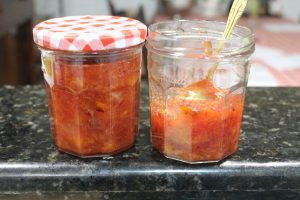

The citrus trees are loaded with fruit: orange, yellow, lime green and orange with a red blush. The latter is blood orange which fruit from about August to October. Slightly sweet with a lovely aroma, I usually make gelato, a family favourite when they are in season but this time I made marmalade.
The actual word MARMALADE is under attack from the EU ( European Union) Traditionally, a spread made from citrus fruit is called marmalade and a spread made from other fruit is called jam. The EU want to change marmalade to citrus marmalade and all other jams will be called marmalade. Poor Paddington Bear wont be able to share his marmalade sandwich with royalty anymore. Let them eat citrus instead!
Making any fruit spread requires preparing the fruit. Usually it is washed, dried, peeled, de-cored and chopped into small pieces. A very sharp knife is essential for this task. I use a whetstone to sharpen our Japanese knives. I submerge the whetstone in a jug of water for about half an hour and then place it on a towel with the coarser side facing up.
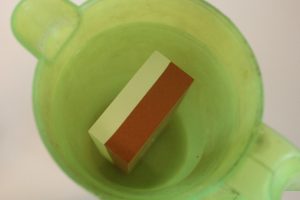

To prepare the whetstone I fill a jug with water and gently put the stone in until it is fully submerged.
Gently swipe the blade, at a slight angle, over the stone. Do the full length of the blade in one sweep. I do this three times, then turn the knife over, repeat. Wipe the blade clean on a cloth and repeat the process using the other, finer grade side of the stone. Carefully wash the knife. Now the blade is very sharp. Just right for preparing fruit for marmalade.
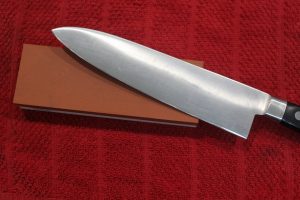

To prepare the fruit use a peeler to lightly skim the peel off the pith, the white layer between the skin and fruit. It doesn’t matter if the skin breaks during peeling as it’s chopped finely later to go in with the fruit. Then use a knife to cut off the pith which can be very bitter and tough. Cut the fruit in half longways, then into half again. Save the pips. Remove any white fleshy bits from the centre, then cut the fruit into smaller pieces. Not too small as marmalade is best with some fruity pieces still remaining after cooking.
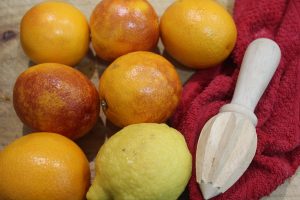

Then scrape the cut up fruit, thinly sliced peel and any juice into a pot, if you’re making the marmalade on the stove top, or a glass bowl if you’re making it in the microwave. Knot the saved pips in a piece of muslin and put in with the fruit. I couldn’t find my muslin, so used a washed handkerchief. Add the sugar and water and put to cook. I actually added some Jam Setta pectin to the mix as it was too thin for our taste. I haven’t added the recipe as there are so many online and it’s best to find a method to suit how you like to cook.
I prefer using the microwave as it is quicker and seems cleaner. Using a pot on the stove top seems to make everything sticky! That is obviously the traditional way. It is also the way I made the marmalade this time. I’ve never made Blood Orange Marmalade before and felt I could watch when it began to thicken more easily if it was in a pot on the stove top.
When the marmalade was nearly at the ‘set’ point I boiled a kettle of water to pour over the jars I’d already sterilised in the dishwasher but mostly to do the lids which had been hand washed. I let them air dry then poured in the beautiful smelling marmalade. Online photos show people filling their jars using funnels, I use a soup ladle ( because I have always done it this way!)
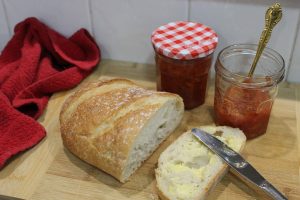

Marmalade is simply fruit and sugar with water and sometimes, pectin added. I think it is probably an economical way to make jam, especially if the fruit is growing on your own tree or given to you. Of course, that assumes you have someone who eats marmalade and jam! The glass jars are finitely recyclable and originally were bought with jam or marmalade in them.


READING
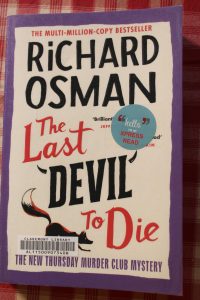

Are you a fan of Richard Osman and his Thursday Murder Club series? I’m reading his latest murder mystery called The Last Devil To Die and it is beautifully crafted, full of unexpected twists and turns and humour. It follows the same characters we met in his previous three books The Thursday Murder Club, The Man Who Died Twice and The Bullet That Missed. Another smart, funny and warm novel as his retirees ( The Thursday Murder Club) discover and solve a series of events all following on from the murder of their antique dealer friend. Osam deals compassionately with aging, living in a retirement village on the ongoing decline of the husband of one of the main characters. It was a great read!
